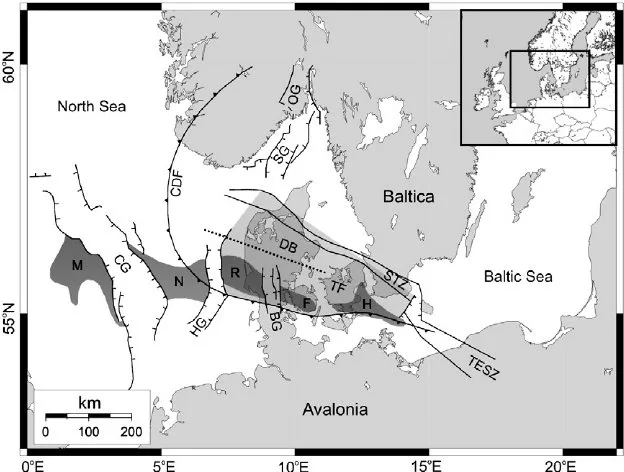DOI 10.1016/j.tecto.2011.11.019
We image the east- and westward extent of a crustal high-velocity body, the thickness of a layered sequence around the Moho at the flank of the body, and the uppermost mantle velocity along the 320 km long refraction and wide-angle reflection seismic profile ESTRID 2007 in the Danish Basin. Ray-tracing modelling of the seismic data reveals a high-velocity body (6.7-7.7 km/s between 10 and 30 km depth) with a lateral extent of at least 110 km. It is interpreted as an intrusive body of gabbroic composition. Moho depth is variable between 30 and 35 km along the profile. The crust is thin in a similar to 180 km wide zone approximately below the western part of the intrusive body and further westward in the basin area. The Pn velocity in the uppermost mantle is relatively low (similar to 7.8 km/s) beneath the thin crust whereas higher Pn velocities (similar to 8.0 km/s) are observed outside this zone. The PmP reflection is characterized by reverberations (“ringing”) in the seismic signal in the zone with low Pn velocity. By 2D full-waveform modelling, these reverberations are explained by a layered transition zone around the Moho consisting of intermixed crustal and mantle material. The layering may be explained by magmatic intrusion along the Moho over a lateral distance of 130 km away from the magmatic source, which is located in the middle of the intrusive body. These intrusive features may be related to extensional/transtensional tectonism in the Tornquist Fan during the late Carboniferous and early Permian. Our new findings suggest a minimum volume of the intrusive body in the Danish Basin of about 60.000 km3, which is 20.000 km3 larger than interpreted from earlier data. Such a large intrusion must have affected the temperature field substantially and may have initiated the subsidence of the post-Permian Danish-Norwegian Basin. (C) 2011 Elsevier B.V. All rights reserved.







